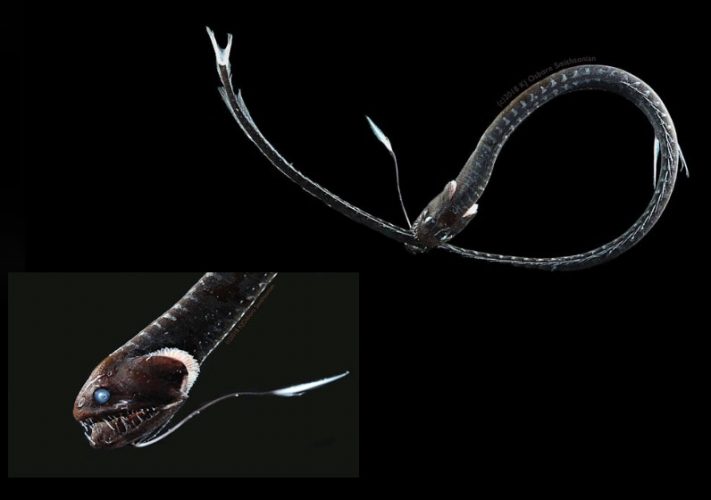WASHINGTON (Reuters) – For fish inhabiting the immense darkness of the deep sea, being ultra-black offers great camouflage in a fish-eat-fish world. Scientists studying some of these exotic creatures now have unraveled the secret behind their extreme color.
These fish – like the fangtooth, the Pacific blackdragon, the anglerfish and the black swallower – have modified the shape, size and packing of the pigment in their skin to the point that it reflects less than 0.5% of light that hits it, researchers said on Thursday.
They studied 16 species that fit this definition of ultra-black. These spanned six different orders of fish – large groupings that each have a shared evolutionary history – indicating this modification evolved independently in all of them.

“In the deep, open ocean, there is nowhere to hide and a lot of hungry predators,” said zoologist Karen Osborn of the Smithsonian Institution’s National Museum of Natural History in Washing-ton, a co-author of the research published in the journal Current Biology. “An animal’s only option is to blend in with the background.”
Very little sunlight penetrates more than 650 feet (200 meters) below the ocean’s surface. Some of these fish reside three miles (5,000 meters) deep.
At such depths, bioluminescence – light emission by living organisms – is the only light source. Some of the ultra-black fish have bioluminescent lures on their bodies to coax prey close enough to be eaten.
The skin of these fish is among the blackest material known, absorbing light so efficiently that even in bright light they appear to be silhouettes, as Osborn discovered when trying to photograph them after they were brought to the surface.
The pigment melanin is abundant in this skin and distributed in an unusual fashion. By packaging perfectly sized and shaped melanosomes – pigment-filled structures within the skin cells – into tightly packed and continuous layers at the skin’s surface, the fish ensure that essentially all light reaching them will hit this layer and never escape.
“This mechanism of making thin and flexible ultra-black material,” Osborn said, “could be used to create ultra-black materials for high-tech optics or for camouflage material for night ops.”






